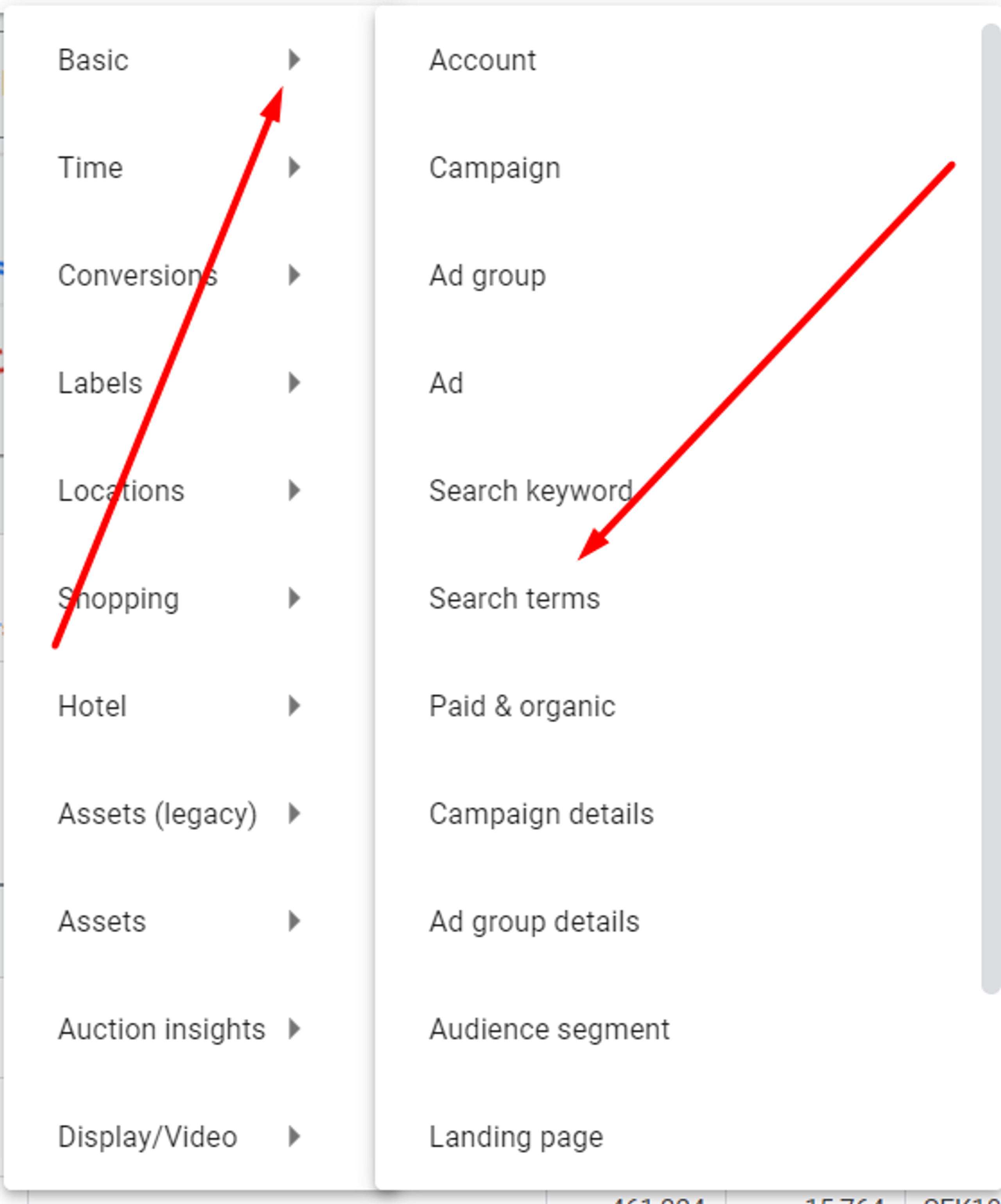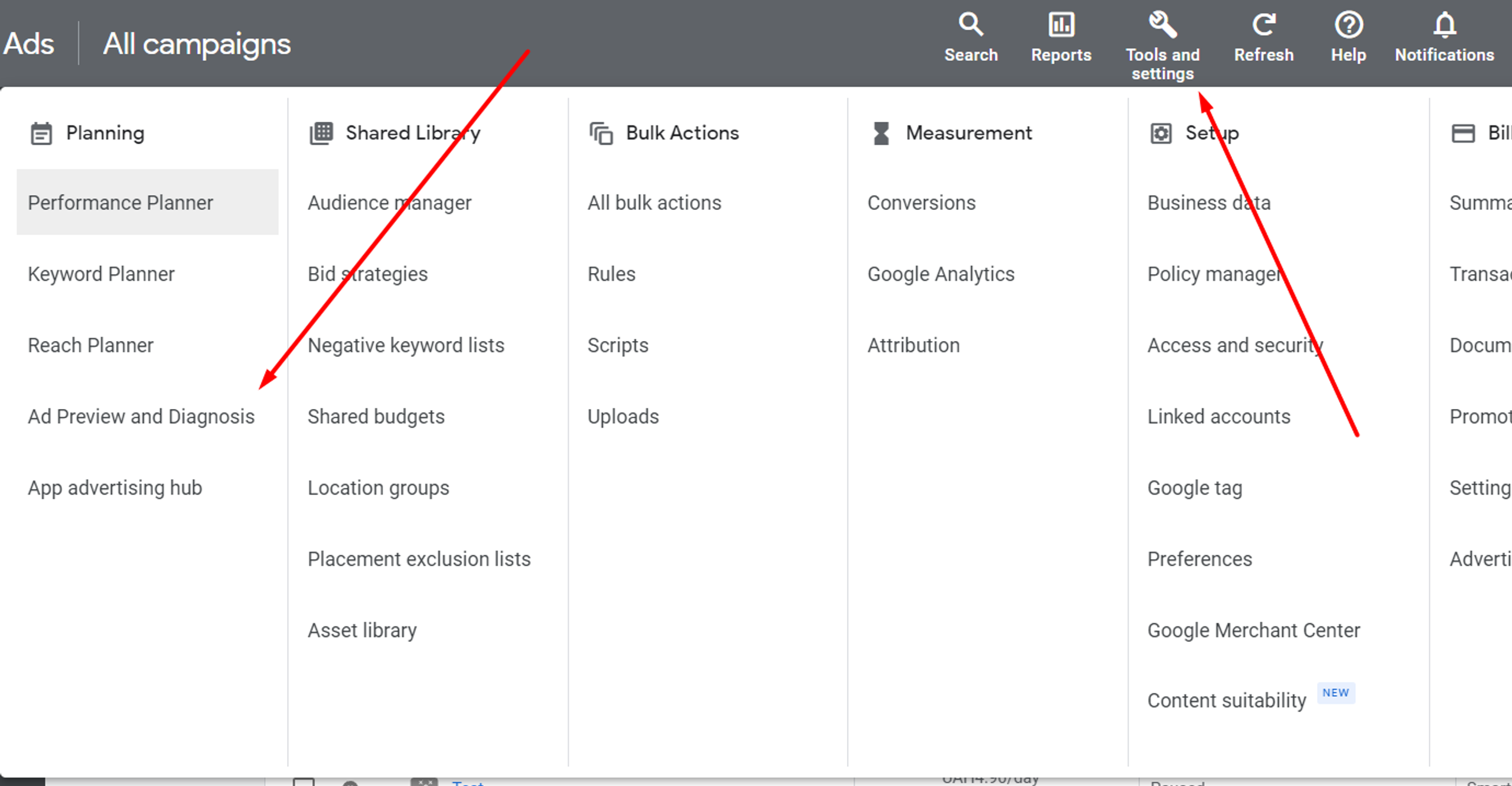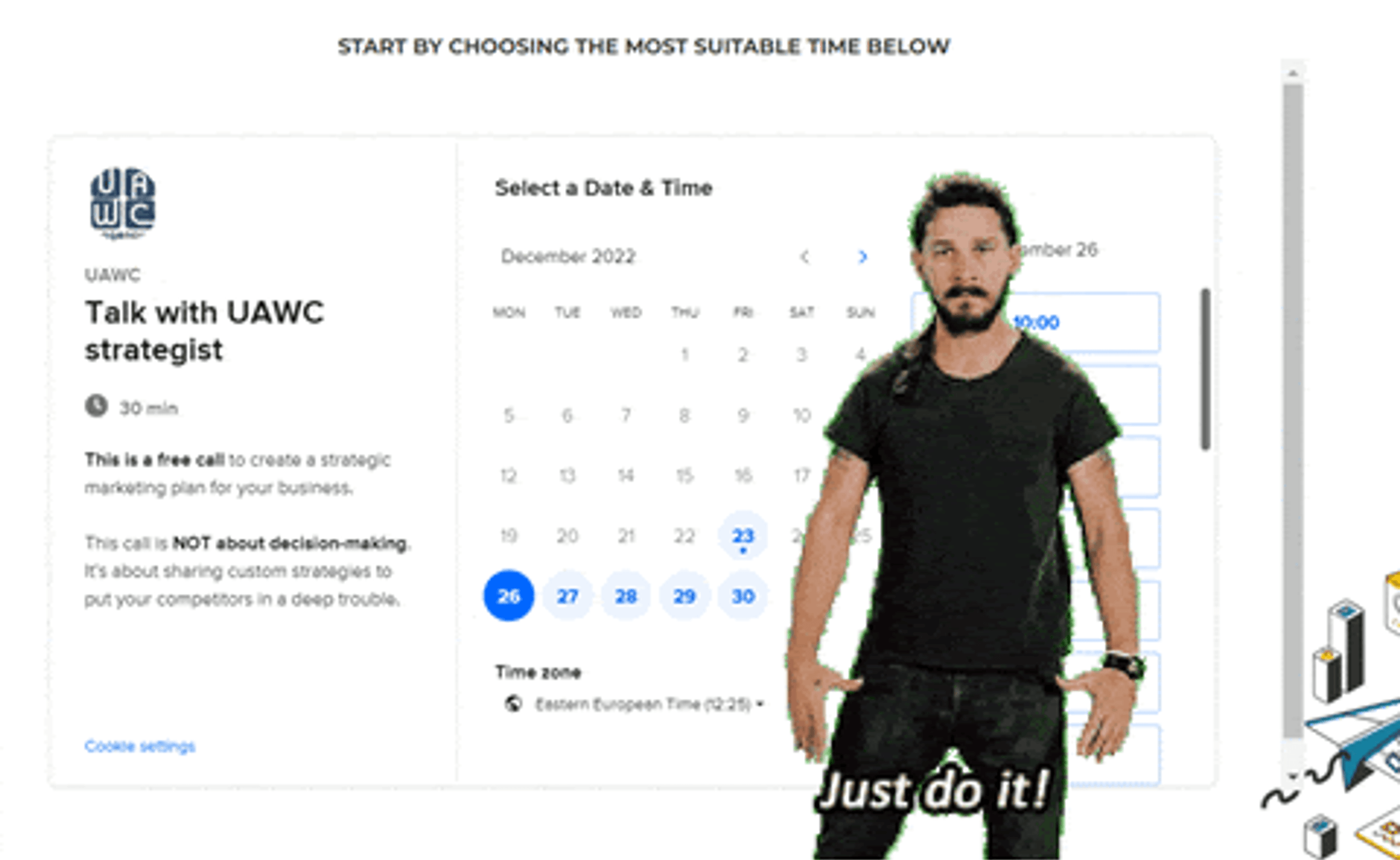Google Ads Audit: Diagnose your Marketing Issues and Discover New Opportunities
Posted on 10/31/2023
Reviewed by Arnt Eriksen updated at 11/1/2023
Introduction
Tired of bashing your head against the wall trying to figure out what is wrong with your marketing? Stay with us for a Google Ads audit procedure that will determine what exactly is preventing your business from reaching the success and profits it deserves.

The main downside of any sufficiently complex system is the number of little things that can go wrong and bring it to its knees.
With the addition of new components that can (and will) break, the chance of something going wrong increases. Identifying the faulty element also becomes harder. If a shovel stops working, it is usually easier to figure out what is the problem, unlike with something like a Caterpillar excavator.
For better or worse, if you are running an eCommerce business and using Google Ads to promote it, you are stuck with the excavator. A big, powerful, and versatile excavator that digs up piles of green, crispy dollars but only as long as it is properly fueled, operated, and maintained.
In this guide, we'll tell you how to run diagnostics on it and ensure it earns you as much money as it can.
What is a Google Ads Audit?
Before you can begin to improve your Google Ads marketing, you need to have a thorough understanding of how it works and the recurring problems it has. The fastest and most efficient way to achieve that is by conducting an audit.
A Google Ads audit is, at its core, the process of reading metrics. You go over your budget, your campaign settings, conversion rates, impression shares, and so on. The tricky part, however, is reading those numbers correctly and understanding what they mean for your business.
Why should I conduct a Google Ads account audit?
Do you like paying Google for no reason? A thorough audit of your Google Ads account is the first step on the road to ensuring you are not pouring more money into Google's pockets than is necessary.
Here is what a proper Google Ads audit should achieve:
1. Redirect your money to the most promising campaigns
One of the first metrics our Google Ads audit assesses is the budget and bidding of your campaigns to search for wasted ad spend. There's a multitude of factors that could be contributing to it, but our method of auditing guarantees none of them will be overlooked. Here are some factors that we pay extra attention to.
Targeting.
The money that's being wasted chasing irrelevant keywords, whether due to their poor choice or bad use of negatives, is the money that is not devoted to the keywords that actually bring in conversions.
Landing page implementation.
This is one of the key factors contributing to your ads' Quality Score and, subsequently, your bid prices. It is not uncommon to achieve a significant reduction in ad spend by making just a few easy adjustments to your landing page.
Poorly performing ad groups and campaigns.
The world changes, and sometimes the fundamental aspects of your campaigns and ad groups that brought success in the past will simply no longer work in the present. To ensure they won't drag your future down, any underperforming elements will either need to be terminated or adjusted to be in line with our standards.
2. Identify correlations and make educated predictions
None of the metrics we'll be looking at exist in a vacuum or are detached from each other. Your conversion rates, your budget, and your return on ad spend (ROAS) are all interconnected in a way that is unique to your business and its marketing.
An audit of your Google Ads account will seek to identify these correlations and present you with data-driven forecasts on how exactly a change in one of those metrics will affect the others.
3. Discover new angles of approach
The truth is, you miss every shot you don't take. Are your campaigns using every ad type available? Are your ads really reaching every demographic that could be interested in your product or service?
There are always opportunities within reach that are ripe for the taking; you must learn to see them. A well-planned and thorough audit will open your eyes to at least some of them.
4. Optimize your management
Sometimes, the bottleneck that prevents a marketing campaign from being optimal lies on the human side of things. One of the goals of a good audit is to ensure that your attention and efforts are directed at things that matter.
Are you sure you are not wasting precious hours doing something that could be automated? We will help you find an answer to that question.
To get better and even more useful data, we recommend linking your Google Ads to a Google Analytics account.
Starting a Google Ads audit
Before we begin, it is essential to have a clear view of the goal we are working toward. The things we'll be looking at during our audit are not goals in their own right but clues that will give you an idea of what areas of your marketing can and should be improved. The exact nature of these improvements, however, is highly dependent on your goals.
Is it an increase in sales or brand awareness that you desire? Acquiring new customers or bringing back those who have already had the pleasure of enjoying your products or services before? Drawing traffic to your website? Depending on what exactly it is that you want, the metrics must be read differently.
Assuming you know what you want to focus on, we can proceed to the audit proper. Alternatively, you could get a free Google Ads audit from our agency and save yourself some time.
But if you want to do it yourself, leave your email in the form to your right to get a free audit template.
Follow this template and our guidelines below, and your Google Ads marketing will be diagnosed in no time.
1. Keep a record of what you do
You will likely need to share your observations and discoveries with your coworkers or clients. If you value their time and want them to enjoy working with you, it would be a good idea to keep your every step clearly documented.
The spreadsheet we have provided for you has been doing a great job for us for many years. Write down your observations under the Recommendations column, and you'll end up with a structured document that will be easy for other people to read.
2. Track your conversions
Even if your goal does not explicitly focus on conversions, this metric can still be invaluable to your marketing. There's no better testament to an ad's quality than a user interacting with it in a way that's beneficial to your business.
To ensure that your conversion tracking is on point, you'll need to first establish if you are already tracking it. If not, set it up as soon as possible. In order to be tracking the relevant data, make sure that the action you specify as a conversion is an action that has a direct benefit to your business, like a purchase or a call. To keep your data accurate, avoid tracking actions that have no value, or tracking the same action multiple times.
3. Set up Google Analytics 4 (GA4)

If you are not using GA4 yet, we highly recommend you start immediately. The longer you wait, the less historical data it will have to work with when Universal Analytics stops working. While this might not look like a big issue now, it may become one if it is combined with other problems that may simultaneously arise in the future. By migrating now, you could be saving the future you a lot of trouble. If you need advice on how to implement GA4, check out this article.
4. Check your attribution model
It often takes more than one ad to tempt a customer into converting and giving you their money. Luckily for us, Google tracks their whole journey from interacting with your first ad to converting, even if it takes days or weeks. Attribution model is a setting that determines how much credit your ad gets when a user interacts with it.
Ideally, once Google has enough conversion data to allow it, you should be using the Data-driven option. This way, credit will be distributed based on past data for a conversion action.
However, keep in mind that this option is not always the best option, and it might not work perfectly depending on the type of business and marketing campaign you are running. When in doubt, use common sense.
5. Take a look at your ad group and campaign settings
If, for some obscure reason, you are still using Google's defaults, please stop immediately. While they are certainly better than no ads at all, the 'better than nothing' mentality will not help you build a successful business.
Remember that Google has very little reason to be interested in improving their default ad and campaign settings. Their goal is to take money from you, not help you make more money. By using their default settings, you are playing right into their hands. Our advice is to keep your campaigns and ads under your personal control. It may require a bit more effort, but the results always make it worthwhile.
To start with, we recommend you first turn off the Auto-applies setting on the account level to prevent Google from automatically making changes to your account, campaign, and ad group settings.
6. Start with your campaign organization
Proper ad campaign organization is a fundamental factor in ensuring the goals of these campaigns are met. Without a clear, distinct structure where campaigns and ad groups within them are separated and organized by region, keywords, negatives, and other factors, it will be all but impossible to collect the data you will need for a full, thorough audit of your Google Ads account.
Aside from helping with the audit itself, keeping your account and its campaigns structured will allow you to fine-tune every campaign and ad group according to their performance. Here are some of the things you should be looking at:
Campaign names.
They should be precise and reflect the nature of the campaigns themselves. Product, targeting, language, and other specifics can all be easily included in campaign names to make navigating them easier, especially for people who might not be familiar with the Google Ads account you are auditing.
A clear goal.
The Cambridge dictionary defines the word 'campaign' as a planned group of activities that are intended to achieve a particular goal. Without a goal, your campaign is just a series of loosely connected actions with no clear purpose. And with no clear purpose, there can be no clear results.
Language.
It is extremely important to keep your campaigns segregated by language. More often than not, a strategy that works in one country will not work on the other side of the globe. If diverse targets are mixed up within a single campaign, making any necessary adjustments will be a small organizational nightmare.
Network type.
Google Ads provides us with a variety of platforms to place our ads on. There is the search network, YouTube ads network, shopping network, and display network.
While looking somewhat similar from behind your Google Ads control panel, these networks look and function drastically differently on the user side of things.
Therefore, the performance of the same ads will vary depending on which network it is targeting. This means that your campaigns should be differentiated by the network they are targeting as well.
Brand or not.
Brand campaigns are campaigns targeting your own branded keywords. While this sounds simple on paper, the rules of the game are considerably different when compared to non-brand campaigns. Therefore, these campaign types should be kept separate.
7. Diversify your campaign types
If you are only using a single campaign type in your marketing, you are probably missing out on a lot of potential customers and their money. The only way to know for sure if a campaign type will work or not is by testing it.
Therefore, in order to pursue our goal of discovering new opportunities, it is essential to run different campaign types and compare them with each other. A search campaign alone will not put your business in the Fortune 500.
8. Check your budget
The bottleneck in a marketing campaign can often be found right on the surface. Your excavator is fueled with money, and no matter how you tweak and maintain its parts, it won't work well if it's running on fumes.
Take a good look at your account and ask yourself some questions. Is the daily budget of your campaigns sufficient to achieve the goals you have set? Are your ads spending all of your budget? If you are seeing campaigns marked as 'limited by budget', take a closer look at them. Could it be that it is better to redirect the funds from your underspending campaigns there? Or maybe it is their optimization that's the problem?
If you are lucky, you might find direct answers to those questions. But even if you do, it does not mean that your audit should stop there. Keep reading to discover other things you should consider.
9. Take a good look at your performance trends

This is a good way to narrow down the list of things or the time periods you want to pay extra attention to. To look at your performance trends, go to your Google Ads account and click on the Campaigns tab, then go over every metric in the drop-down menu. We recommend tracking either the last 14 or the last 30 days, depending on how fast the climate changes in your particular business.
Seeing any rapid ups or downs? Note when they happened and the exact number by which the metric changed, then try to find a correlation with a different graph. This can give you a clue as to what could have caused this change.
10. Check your Search terms report



On this screen, you should be able to see the search queries triggering your ads and the associated statistics. Here, you should be looking for two things: irrelevant queries and queries that are low on conversions.
Irrelevant search terms are rather self-explanatory: they are the queries that have no relevance to your business but are still eligible to gain impressions from your ads. If you are seeing irrelevant search terms, it’s a clear sign your negative keyword lists need some work.
Search terms that are low on conversions but are otherwise relevant and frequently clicked, usually indicate that there's either something wrong with your landing page, or the ad that's leading people to you is misleading.
11. Test your search terms
First of all, we should mention that manually searching for your own keywords is extremely counterproductive. Let's suppose for a minute that you do just that and have your ad pop up in front of you. If you click it, you throw a couple of dollars out of the window and hurt your statistics and data gathering. If you don't, Google will see it as an ad being irrelevant to your search query and not show it again for you and, possibly, other users searching for the same query, if you do this often enough.
Thus, there are no good outcomes for manual search terms testing. But do not worry, for Google has blessed us with their Ad Preview and Diagnosis tool.

By using it, you can test and see for yourself which search queries can trigger your ads, which ad copy will be shown in response to them, and how these ads will look on different devices. This way, you can easily identify if your keywords or negative keywords have insufficient coverage, or if they are triggering the wrong versions of your ad.
This is also a great place to engage in some espionage on your competition. Sometimes, the reason you are not getting clicks isn't that your ads are bad but that your competitors have the audacity to bribe the customers with sales.
Note: It is important to remember that, at least at the time of writing this article, this tool does not always work in the way it is intended and should mostly be used to see how your ad looks in its natural environment. Do not panic if you are not seeing your ad – the only way to find out for certain how often it appears is by taking a look at your impressions.
12. Get intimate with your keyword and negative keyword lists
Some of our previous points might have revealed the most glaring issues with your keywords, but that does not mean we are done with them.
Now is the time to open each of those lists and check the performance of each individual keyword. The metric you should be particularly interested in is their conversion rates and their correlation with impression shares. If you find a keyword that is getting impressions but little to no conversions, you've just identified one of your budget holes and a likely negative keyword candidate.
However, reviewing the keywords you already have is not enough. Keyword research is not something you should do once while setting up your campaign and then forget about. As the world changes, so do the queries. Therefore, it is best to develop a habit of conducting keyword research on a regular basis to make sure your targeting keeps up with the times.
This is especially important when it comes to negative keywords. If some new trend sharing the keywords you are targeting slips your attention, your budget can end up severely depleted. Therefore, it is always important to make sure your negative keyword list is up to date at all times.
13. Check your landing pages
Landing pages represent one of the key factors that determines your ads' Quality Score and the overall user experience of all the people your marketing nets are reeling in; they can make or break your whole pay per click (PPC) campaign.
Is the technical side of things up to your standards? Google does not favor pages that take too long to load, and neither will your customers. If your ads target mobile devices, ensure that your landing page can load quickly even with a subpar connection. For that same reason, try to avoid putting autoplaying videos there, especially when the region you are targeting is known for having steep mobile data pricing (looking at you, America).
What about the content itself? Is it relevant to the keywords your ads are targeting? Is there absolutely no way to increase this relevance and squeeze a little more Quality Score out of it? It is worth keeping in mind that the reward for all of this can be a significant decrease in cost-per-click (CPC).
14. Track the Quality Scores of your ads
Landing pages are not the only thing that affects the Quality Score of your ads and, subsequently, their ad rank and the price you have to pay for it.
One of the easiest ways to improve it is by increasing your ad relevance. Avoid using ads that do not align well with the keywords they are targeting, as this will lower their Quality Sore, draining your budget and decreasing the clickthrough rate (CTR). Keeping the content of your ads as relevant as possible is an easy way to assist yourself evict your competition from your rightful property on the search result pages.
15. Measure the diversity of your ad types
As we have already mentioned, testing different approaches and weighing them against each other is the key to finding the approaches that work. This also applies to your ad types.
Responsive search ads may look appealing, but making every ad in every single ad group a responsive search ad is never a wise idea. The same is true for dynamic search ads. There can be no ad testing without proper ad variety. And with no ad testing, you'll never know if you are doing well, if you are doing badly, and which direction to take to do better.
Therefore, unless you really know what you are doing (you probably wouldn't need an audit if that were the case), it is best to address any overreliance on specific ad types if you see it.
16. Check the performance and organization of your ad groups.
All the ad types in the world won’t make a difference if your ad group organization is a mess.
You need clear data to be able to make educated strategic decisions, and in order to obtain this clear, precise data, you need to isolate every factor when gathering it.
With ad groups, this means properly organizing them. By introducing single keyword ad groups, single product ad groups, and single-themed ad groups with different match types to your campaigns, you can get precise data on each individual targeting option's performance.
More than that, you'll be able to easily customize your bids on the fly and tailor them to any change in external circumstances.
It also makes sense to group the ads targeting closely related keywords under one ad group.
17. Test constantly
Unless you can read the minds of thousands of people simultaneously and figure out what they like, you'll have to do extensive testing to figure out the best approach for your ads.
Specifically, A/B testing, which is the practice of running multiple versions of one ad at the same time and measuring their performance against each other, is essential.
The human mind is a complex thing, and sometimes, the difference between an ad that drains your budget and one that brings you one conversion after another can be as minor as a change in the color of a background.
A/B testing is what helps you discover those little details and helps you adapt your creative and bidding strategies accordingly. If your marketing does not already make good use of it, it is wise to start immediately.
18. Examine your ad copies
Now that we are done with the campaigns and groups, it's time to take a look at things at the ground level. After all, this is what the user sees. Neither your perfect choice of keywords nor your brilliant bidding strategies will make them click on your ad and give you their money if the ad they see does not appeal to them.
First of all, your ad should be clear in what it is offering. Misleading descriptions and headlines will only make you waste your budget on irrelevant clicks.
Being clear about what you offer is not enough, however. You also need your ad to show the user why they may want to give their money to you and not your competition.
Think about what makes your product special and find a way to demonstrate it using the tools Google gives you. Even if your business does not deal in unique products, you can try to appeal to potential customers by telling them about the way you would service them.
Free shipping, extended warranty, loyalty and referral programs - any of these things could prove to be enough to persuade the user to click on your ad and convert.
To further contribute to your goal of getting clicks, ad copies should feature calls-to-action (CTAs). You don't want to simply tell your audience about your product. You need to compel them to act in a way that is beneficial to your bank account.
19. Make sure you are using ad extensions

If you haven't read our article on ad extensions, we recommend you do that now. Ad extensions are an easy way to turn your average Google Ads into amazing ones.
There's so much value your search ads can get out of them, there's absolutely no justification for not using them. They increase your ads' visual footprint on the search results page, they give you more room to include keywords (free Quality Score), and they provide an outlet for your creativity, allowing your ads to be truly unique and stand out among the competition.
More than that, they can give your viewers extra information about you or your products, which can often be enough for them to make a purchase decision even before clicking on your ad (and if they don't like what they see, they know it before they make you pay for their click).
It is safe to assume that your competitors are already using ad extensions. Unless you want to give them a free edge over you, we suggest you do the same and include them in your own Google Ads.
20. Do not forget the timing and scheduling
Attention to detail is what makes the difference between a good PPC manager and a great one. One of these details that is, sadly, often overlooked, is the correlation of your ads' performance to the time of day, week, or month.
Depending on the products or services you provide, you might have better luck selling them during certain time periods and focusing your ad spending accordingly. For example, if you are running a restaurant, you'll probably want to redirect your bid budget from mornings to evenings, and from weekdays to Fridays and weekends.
21. Check your ad and keyword text quality
Sometimes, the issue that keeps your ads from getting impressions and your bank account from being filled with cash can be as minor as a spelling mistake in one of the keywords. Ad descriptions or headlines with bad grammar or stylistics will not be contributing to your customers' trust either.
Checking every little detail can be a tedious process, but if you like profits, it shouldn't be too hard to find motivation. It would be really disappointing if the thing that kept you from making it into the Fortune 500 turned out to be a misspelled word, don't you think?
Summary
If you've made it here, congratulations. You should now have a good understanding of the shortcomings your Google Ads account may have and, hopefully, an idea of how to start addressing them.
If you still feel like there's something that slipped your attention, or that it would be better to trust your marketing diagnostics to doctors with actual degrees, feel free to schedule a free Google Ads audit from us. Here are some of its benefits that you will certainly enjoy:
Increase your Quality Score:
Rely on our ten years of experience to improve your Quality Score and CPC.
Grow your impression share:
Make your brand and products recognizable and become the one who sets trends.
Optimize your budget:
With us, you can be sure that every dollar you spend is contributing toward your goals.
Find new opportunities:
There's money out there that you could be taking right now. We can help you see it.

